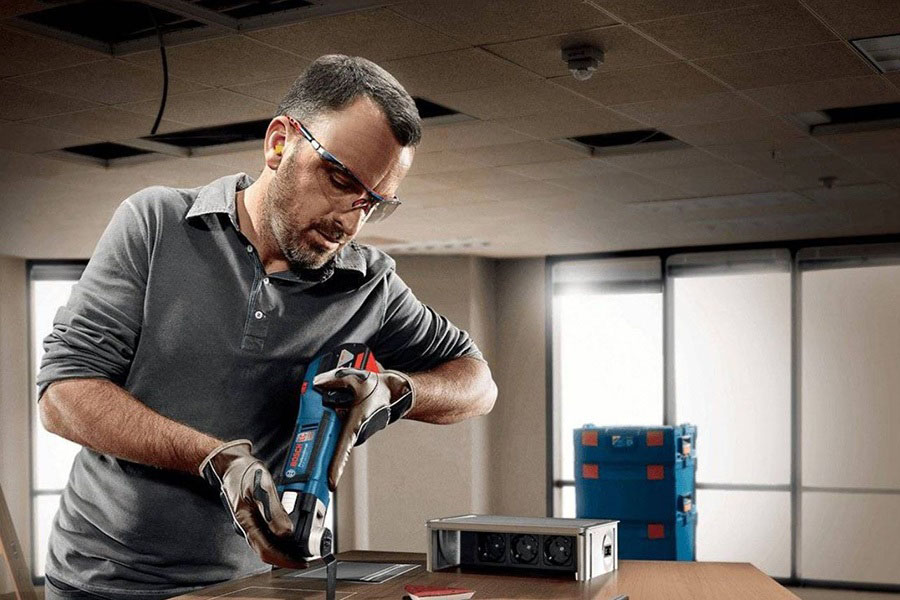Power tools play a crucial role in both DIY endeavors and professional tasks, providing a level of efficiency and accuracy that hand tools simply cannot offer. Nonetheless, these devices are not immune to issues. Learning how to identify and address common problems with your power tool set can not only save you both time and resources but also prolong the durability of your equipment. Here is a strategy for pinpointing and remedying the most typical complications.
Power Tool Fails to Activate
- Verify the Power Connection: Make sure the tool is correctly connected to the power source or that its battery is fully charged. For tools that operate on batteries, testing with an alternate battery can help determine if the original battery is the problem.
- Cord Inspection: For tools that use a cord, examine it thoroughly for any signs of wear or damage. A damaged cord can interrupt the power supply to the tool.
- Switch Check: Accumulated dust and debris can obstruct the switch’s function. Cleaning it with compressed air or a specialized cleaning solution can resolve this issue.
Tool Operates More Slowly Than Usual
- Battery Status: In cordless tools, a battery nearing the end of its life can result in reduced tool speed. It may need to be recharged or replaced.
- Cooling System: Tools can slow down if they overheat. Ensure the air vents are unobstructed and clean them to facilitate proper cooling.
- Carbon Brushes: Degraded carbon brushes can affect tool performance. Inspect and replace them if they are worn out.
Increased Noise or Vibration
- Secure Any Loose Components: Loose screws, bolts, or other fittings should be tightened as they can lead to unnecessary vibration and noise.
- Bearings and Gears: If bearings are worn or gears are damaged, this can cause significant noise. These parts might require lubrication or replacement.
- Condition of Blades or Bits: Blunt or damaged blades and bits can force the tool to exert more effort, causing increased noise and vibration. They should be sharpened or replaced accordingly.
Tool Overheats
- Task Suitability: Using a tool for a job it’s not designed for can lead to overheating. Always use the correct tool for each task.
- Ventilation: Ensure the tool’s vents are clear to allow heat to escape efficiently. Regular cleaning is essential for maintaining airflow.
- Lubrication: Proper lubrication reduces friction and heat buildup. Consult the tool’s manual for guidance on lubrication points and the types of lubricant to use.
Issues with Batteries in Cordless Tools
- Battery Condition: Batteries have a finite life. If a battery no longer maintains a charge, it might need to be replaced.
- Charger Issues: The problem might lie with the charger. Testing it with a different battery can help ascertain its functionality.
- Impact of Temperature: Battery performance can be adversely affected by extreme temperatures. Store batteries in a temperate environment to avoid such issues.
Preventative Care
Conducting regular maintenance can avert many issues before they arise. Maintain cleanliness, ensure proper lubrication, and store tools correctly. Regular inspections for signs of wear and timely part replacements are crucial. Always follow the manufacturer’s maintenance guidelines.
Summary
Addressing common issues with your power tool set is often straightforward. By adhering to these recommendations, you can quickly resolve many problems, thereby avoiding expensive repairs or replacements. Safety should always be your top priority. Wear the right protective equipment and adhere to safety protocols when using power tools. If a problem continues or if you’re unsure about a repair, seeking professional advice from construction tools suppliers like Industrial Solutions is advisable.

Basketball fan, feminist, record lover, Eames fan and holistic designer. Acting at the junction of beauty and function to craft an inspiring, compelling and authentic brand narrative. Let’s design a world that’s thoughtful, considered and aesthetically pleasing.
